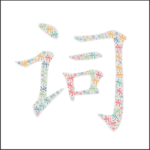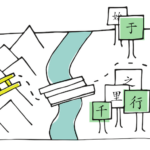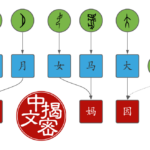Articles in the ‘Vocabulary’ category Page 4
-
Time quality: Studying the right thing at the right time
Many students think that learning a language is limited to going to class, working your way through difficult texts or having conversations with native speakers. These all contribute to your learning, but learning is not limited to things you can schedule in your calendar. If you think of it like that, you’ll miss so many learning opportunities!
Read → -
How to start learning Chinese again after a break
Are you picking up Chinese again after a break, and struggle to find the words and characters? Does spoken Mandarin sound vaguely familiar but incomprehensible? Then this guide will help you get back on track!
Read → -
How to improve fluency in Chinese by playing word games
What if I told you that there is a game that helps you speak Chinese more fluently, is great for improving communicative ability and works well regardless of your current level? What if I said that the game is also fun and free to play?
Read → -
The building blocks of Chinese, part 6: Learning and remembering compound words
Compound words in Chinese can look confusing at first, but once you see the patterns, learning and remembering them becomes much easier.
Read → -
The building blocks of Chinese, part 5: Making sense of Chinese words
How many characters do you need to know to be able to read Chinese? The truth is that characters only provide a foundation, so regardless of how many you know, you won’t be able to read much unless you also know many words.
Read → -
Why spaced repetition software is uniquely well suited to learning Chinese characters
While spaced repetition software can be very useful, it also has some serious drawbacks. Fortunately, most of them don’t apply to learning to write Chinese characters!
Read → -
The best Chinese reading practice for beginners
The best way to learn to read in Chinese is to read texts you can understand without constantly using a dictionary. As a beginner, such texts aren’t easy to find, but let’s have a look at the best reading resources I know for beginners.
Read → -
6 challenges students face when learning to read Chinese and how to overcome them
Learning to read Chinese comes with several challenges, some of them unique to Chinese. What are these challenges, what do they mean for you as a student and how can you overcome them?
Read → -
The building blocks of Chinese, part 4: Learning and remembering compound characters
The key to learning Chinese compound characters is to learn the building blocks and how they fit together, including both the function of each component and the structure of the compound. Add some clever memory techniques and you’ll be able to dramatically increase the speed and efficiency of your learning!
Read → -
The building blocks of Chinese, part 3: Compound characters
A vast majority of Chinese characters are compounds, and understanding how the components fit together and which function they have, will make learning and remembering characters a lot easier. This article explains the most important types of compounds you’ll encounter and how you can use that knowledge to learn characters more easily.
Read →









